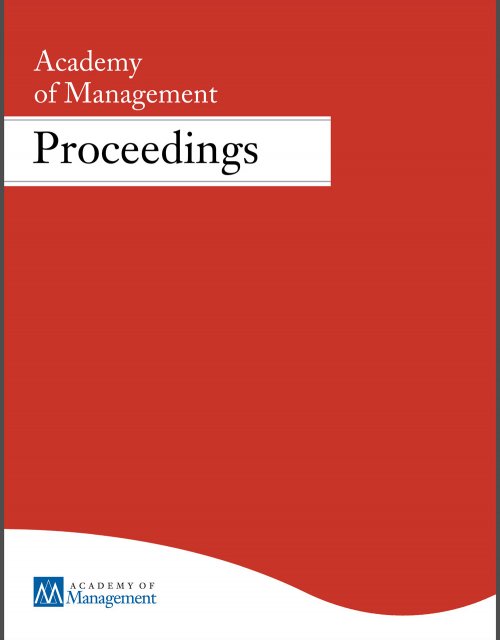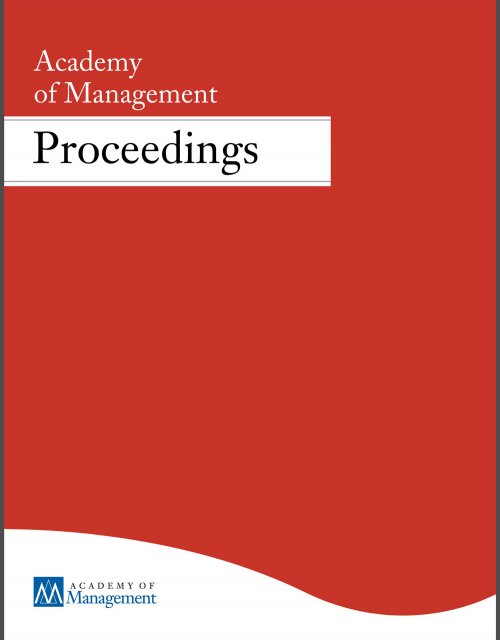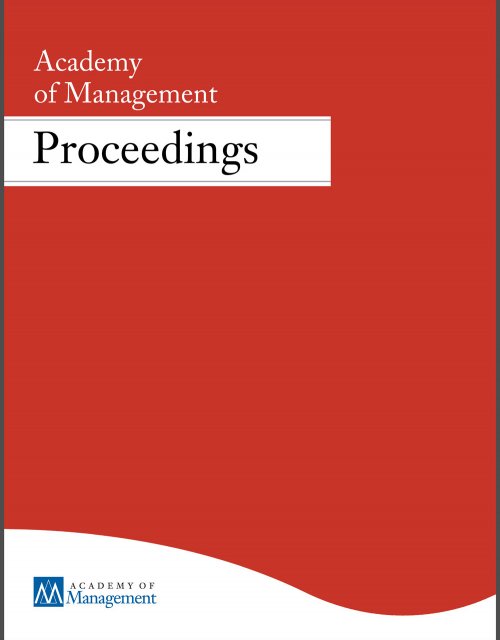Publication records
Subject(s)
Entrepreneurship; Human resources management/organizational behavior; Information technology and systems; Management sciences, decision sciences and quantitative methods; Marketing; Product and operations management; Strategy and general management; Technology, R&D management
Keyword(s)
Hidden Champions, digital transformation, digitalization, customer, disruption, challenges, digital experts, IT specialists, innovation, agile thinking
In this joint study, the Hidden Champions Institute (HCI) of ESMT Berlin and IDG Research Services look into the question of whether the hidden champions are leading the digital transformation of the German economy. More precisely, the study compares the digital transformation among hidden champions to other companies and analyzes their challenges. The result shows that the German hidden champions take the digital revolution seriously and are working vigorously on positioning themselves more digitally, both regarding internal processes and in relation to new business models. In the process, they are considerably quicker and more successful than many small and medium-sized enterprises (SMEs) that are not market leaders. However, in comparison to large corporates, the digital transformation of the hidden champions frequently lags behind, requiring them to learn from companies within their own ranks that are among the global leaders in the digital transformation. There are indeed such “hidden digital champions”, as the study shows.
With permission of IDG Business Media
German edition of the study: Hidden Champions - Champions der digitalen Transformation?.
Pages
32
Subject(s)
Economics, politics and business environment; Information technology and systems; Technology, R&D management
Keyword(s)
Blockchain, distributed ledger, strategy, policy, innovation
In its 2018 coalition agreement, the German federal government has set itself the goal of adopting a "Blockchain strategy" in this legislative period. As part of the planned promotion of Distributed Ledger and Blockchain technologies, the government wants to create a framework for the development and application of these technologies and test them in public administration. The Federal Ministry of Economics and Energy and the Federal Ministry of Finance are jointly in charge of developing the strategy.
On this occasion, in a workshop on 3 July 2018 at the Digital Society Institute of ESMT Berlin, 35 experts from politics, business and science discussed how a national blockchain strategy can be practically organized.
The discussion focused on the questions of what goals such a strategy should have, what the central enablers and appropriate framework conditions for the development and application of Distributed Ledger technologies such as blockchain can be in Germany, and what role the state plays in promoting the technology and managing risks in this technology field.
Sarah Basic and André Eid (Federal Ministry for Economic Affairs and Energy), Dr. Christian Hampel (Ernst & Young GmbH), Dr. Jürgen Kohr (Fujitsu), Dr. Manfred Lochter (Federal Office for Security in Information Technology) and Kai Wagner (Jolocom) gave input speeches to the debate.
Based on the workshop discussion, this paper outlines requirements for a national blockchain strategy.
[Die Bundesregierung hat sich in ihrem Koalitionsvertrag das Ziel gesetzt, in dieser Legislaturperiode eine „Blockchain-Strategie“ zu verabschieden. Im Rahmen der geplanten Förderung von Distributed Ledger und Blockchain Technologien sollen die Rahmenbedingungen für Entwicklung und Einsatz der Technologien verbessert und diese auch in der öffentlichen Verwaltung erprobt werden. Mit der Erarbeitung der Strategie sind federführend das Bundesministerium für Wirtschaft und Energie (BMWi) und das Bundesministerium der Finanzen (BMF) betraut.
Aus diesem Anlass erörterten in einem Workshop am 3. Juli 2018 am Digital Society Institute der ESMT Berlin 35 Experten aus Politik, Wirtschaft und Wissenschaft, wie eine nationale Blockchain-Strategie praktisch organisiert sein kann.
Im Zentrum der Diskussion standen die Fragen, welche Ziele eine solche Strategie haben sollte, was zentrale Ermöglicher und geeignete Rahmenbedingungen für die Entwicklung und Anwendung von Distributed Ledger Technologien wie Blockchain in Deutschland sein können, und welche Rolle dem Staat bei der Förderung und Bekämpfung von Risiken in diesem Technologiefeld zukommt.
Impulsvorträge für die Diskussion hielten Sarah Basic und André Eid (Bundesministerium für Wirtschaft und Energie), Dr. Christian Hampel (Ernst & Young GmbH), Dr. Jürgen Kohr (Fujitsu), Dr. Manfred Lochter (Bundesamt für Sicherheit in der Informationstechnik) und Kai Wagner (Jolocom).
Auf der Grundlage der Workshop-Diskussion skizziert dieses Papier Anforderungen an eine nationale Blockchain-Strategie.]
Pages
14
Subject(s)
Information technology and systems; Technology, R&D management
Keyword(s)
Cybersecurity, information security
Book review of Paul Voigt, “IT-Sicherheitsrecht”, (IT security law), 2018
Secondary Title
Buchbesprechungen. Paul Voigt, IT-Sicherheitsrecht
Journal Pages
r81–r81
Subject(s)
Human resources management/organizational behavior
Keyword(s)
Dark triad, self-uncertainty, motivation to lead, hostile attributions, leadership support, experiment
We propose a two-fold explanation, based on self-related uncertainty, to explain why individuals with antisocial personalities may be more likely to attain leadership positions in the upper echelons of organizations. First, in three experiments (Ns = 141, 238, and 602), we showed that individuals who score high on the dark triad of personality (i.e. psychopathy, narcissism and Machiavellianism) react to the distress associated with self-related uncertainty through enhanced hostility against others, which in turn increases their motivation to lead. Second, in two correlational studies (Ns = 58 and 87) and one experiment (N = 180), we found that hypothetical and actual leaders with psychopathic traits are more likely to be supported by individuals who feel uncertain about their own sense of self. Together, our results provide evidence of the significant role played by self-uncertainty in explaining why and when dark triad individuals are able to attain leadership positions. We discuss implications for theory and research on the dark triad, leadership, and identity, and their relevance for understanding both organizational and public leadership.
With permission of the Academy of Management
Volume
2018
ISSN (Online)
2151-6561
ISSN (Print)
0065-0668
Subject(s)
Human resources management/organizational behavior
Keyword(s)
Age, innovative behavior, inter-departmental collaboration, personnel outcomes
Although the topic of aging at work is receiving increasing research attention, it remains unclear if aging employees are less innovative at work and what consequences this relation entails. We integrate the literature on aging with research on innovation to gain a better understanding of whether—and if so, when—employees’ aging harms their professional outcomes via decreased innovative behavior. Multi-source, time-lag data on 305 project managers provides support for the idea that age does not always go hand in hand with low innovative behavior and, subsequently, low professional outcomes. Rather, inter-departmental collaboration works as a social buffer for these negative effects. Specifically, aging employees with low inter-departmental collaboration are less innovative and subsequently less successful. In contrast, the “age handicap” vanishes when aging employees collaborate with other members in their organizations. Our results highlight the importance for organizations to foster collaboration among their members, either formally or informally.
With permission of the Academy of Management
Volume
2018
ISSN (Online)
2151-6561
ISSN (Print)
0065-0668
Subject(s)
Technology, R&D management
Keyword(s)
Patent, pharmaceuticals, drug development
Firms in the pharmaceutical industry typically rely on a period of market exclusivity derived from patent protection and data exclusivity to recoup their investments in R&D. The invalidation of patent rights during drug development renders data exclusivity the sole source of protection and shifts the period of market exclusivity at the project level. Invalidation therefore constitutes a natural experiment that allows us to identify how the duration of market exclusivity affects firms' incentives to innovate. Our analysis is based on a novel data set that links the development histories of drug candidates with underlying patent data. We identify causal effects relying on an instrument for the potentially endogenous patent invalidation. Our findings highlight that shorter durations of market exclusivity reduce the hazards of successful drug commercialization.
With permission of the Academy of Management
Volume
2018
ISSN (Online)
2151-6561
ISSN (Print)
0065-0668
Subject(s)
Economics, politics and business environment
While we know much about how networks shape organizational performance, we know less about the linkages between networks and performance in the aftermath of exogenous, industry-wide shocks. We examine how the dot-com crash of 2000 affected investment banks’ ability to convert three facets of their positions in inter-firm networks–structural holes, status and fragility–into future performance. We find that the post-crisis performance of banks rich in structural holes does not exceed that of banks in closed networks. Conversely, high-status banks lose their advantage relative to low-status banks, while banks in fragile network positions outperform their robustly positioned peers. External shocks can thus turn the tables–dethroning organizations in typically advantaged network positions, while also opening up new opportunities for their fragile counterparts.
With permission of the Academy of Management
Volume
2018
ISSN (Online)
2151-6561
ISSN (Print)
0065-0668
Subject(s)
Economics, politics and business environment; Entrepreneurship
What should a CEO do to increase the social multiplier of a startup? What organizational strategy, in other words, should a manager adopt to shape informal social interactions among employees, so that they perform better in the office than if they telecommuted? We develop a network-based model that contrasts two opposing approaches. The first, consistent with Coleman’s vision of social capital, is embedding. Using an embedding strategy, the CEO fosters strong and dense ties among employees, and thus seeks to raise productivity by facilitating knowledge spillovers and creating social pressure. The second, keeping with White’s theory of social control, is decoupling. Using a decoupling strategy, the CEO promotes weak and sparse connections among employees, and so tries to increase productivity by minimizing distraction. Our findings indicate that, while embedding is generally preferable to decoupling for most kinds of organizations, decoupling is clearly preferable when two conditions are jointly met: the organization’s distribution of human capital is left-skewed and it is populated more by “slackers,” who “look down” in order to self-enhance, than by “climbers” who “look up” to self-improve. Our results also suggest that the zone of network irrelevance–that is, the space of possibilities over which the CEO’s efforts to rewire the network will prove inconsequential–paradoxically contracts as the firm grows: counter to a prevailing picture of small firms as inherently malleable, our model suggests that a CEO achieves less through shaping informal social interactions when the organization is not yet at scale. Implications for future research on networks and organizations are discussed.
With permission of the Academy of Management
Volume
2018
ISSN (Online)
2151-6561
ISSN (Print)
0065-0668
Subject(s)
Economics, politics and business environment; Information technology and systems; Technology, R&D management
Keyword(s)
IT security law, state of the art, protection goals, risk definition, systematization
The report deals with the current situation of IT security law and the chance that there are going to be changes in the near future. Further, it explains the system classification of IT security law and that definitions and regulations are different in every field of expertise. Finally, it deals with the state of the art and gives recommendations.
Volume
2018
Subject(s)
Economics, politics and business environment; Finance, accounting and corporate governance
Keyword(s)
Endowments, charitable foundations, asset management, asset allocation, regulation
JEL Code(s)
G10, G11, G23, G28
This paper analyzes investment policies of German foundations and compares them with U.S. university endowments. In 2017, only 65 % of German endowments expected an investment return above the expected inflation rate. This raises the question if German endowments are prepared for the future. The paper indicates areas of improvement derived from best practices of top U.S. university endowments and relates their endowment performance to German endowment proxy portfolios. The analysis shows that U.S. endowments are characterized by a higher degree of diversification and risk taking as well as a better risk allocation. With estimated total endowment assets of EUR 100 billion, leveraging this potential would lead to an increase in German endowment returns of about 2 % or EUR 2 billion per year.
[Gemäß einer Studie des Bundesverbands Deutscher Stiftungen (BVDS) erwarteten für das Jahr 2017 nur noch 65 % der Stiftungen eine Rendite über der Inflationsrate – in den Jahren 2015 und 2016 waren es noch über 80 %. Daher stellt sich die Frage, ob Stiftungen finanziell für die Zukunft gerüstet sind und somit ihrem gemeinnützigen Zweck in der vorgesehenen Weise nachkommen können.
Am Beispiel US-amerikanischer Universitätsstiftungen werden Optimierungshebel für die Anlagepolitik deutscher Stiftungen aufgezeigt. Während Fonds und Festgeld die häufigsten Anlageformen deutscher Stiftungen sind, zeigt die Analyse der US-amerikanischen Universitätsstiftungen, dass diese eine breitere Streuung, eine bessere Berücksichtigung der Risikoallokation und eine höhere Risikobereitschaft aufweisen. Eine Simulation von Referenzportfolios für unterschiedliche Anlagepolitiken deutscher Stiftungen sowie ein Vergleich mit Yale als dem Spitzenreiter US-amerikanischer Universitätsstiftungen zeigt ein Renditepotential von 2 % oder bei einem geschätzten Stiftungsvermögen von 100 Mrd. Euro von 2 Mrd. Euro pro Jahr auf.
Diese Ergebnisse zeigen die Notwendigkeit einer intensiven Beschäftigung mit der Frage, wie Stiftungen zukünftig ihre Vermögen verwalten und sie dabei mit geeigneten Rahmenbedingungen unterstützt werden können.]
[Gemäß einer Studie des Bundesverbands Deutscher Stiftungen (BVDS) erwarteten für das Jahr 2017 nur noch 65 % der Stiftungen eine Rendite über der Inflationsrate – in den Jahren 2015 und 2016 waren es noch über 80 %. Daher stellt sich die Frage, ob Stiftungen finanziell für die Zukunft gerüstet sind und somit ihrem gemeinnützigen Zweck in der vorgesehenen Weise nachkommen können.
Am Beispiel US-amerikanischer Universitätsstiftungen werden Optimierungshebel für die Anlagepolitik deutscher Stiftungen aufgezeigt. Während Fonds und Festgeld die häufigsten Anlageformen deutscher Stiftungen sind, zeigt die Analyse der US-amerikanischen Universitätsstiftungen, dass diese eine breitere Streuung, eine bessere Berücksichtigung der Risikoallokation und eine höhere Risikobereitschaft aufweisen. Eine Simulation von Referenzportfolios für unterschiedliche Anlagepolitiken deutscher Stiftungen sowie ein Vergleich mit Yale als dem Spitzenreiter US-amerikanischer Universitätsstiftungen zeigt ein Renditepotential von 2 % oder bei einem geschätzten Stiftungsvermögen von 100 Mrd. Euro von 2 Mrd. Euro pro Jahr auf.
Diese Ergebnisse zeigen die Notwendigkeit einer intensiven Beschäftigung mit der Frage, wie Stiftungen zukünftig ihre Vermögen verwalten und sie dabei mit geeigneten Rahmenbedingungen unterstützt werden können.]
Pages
44
ISSN (Print)
1866–4016


